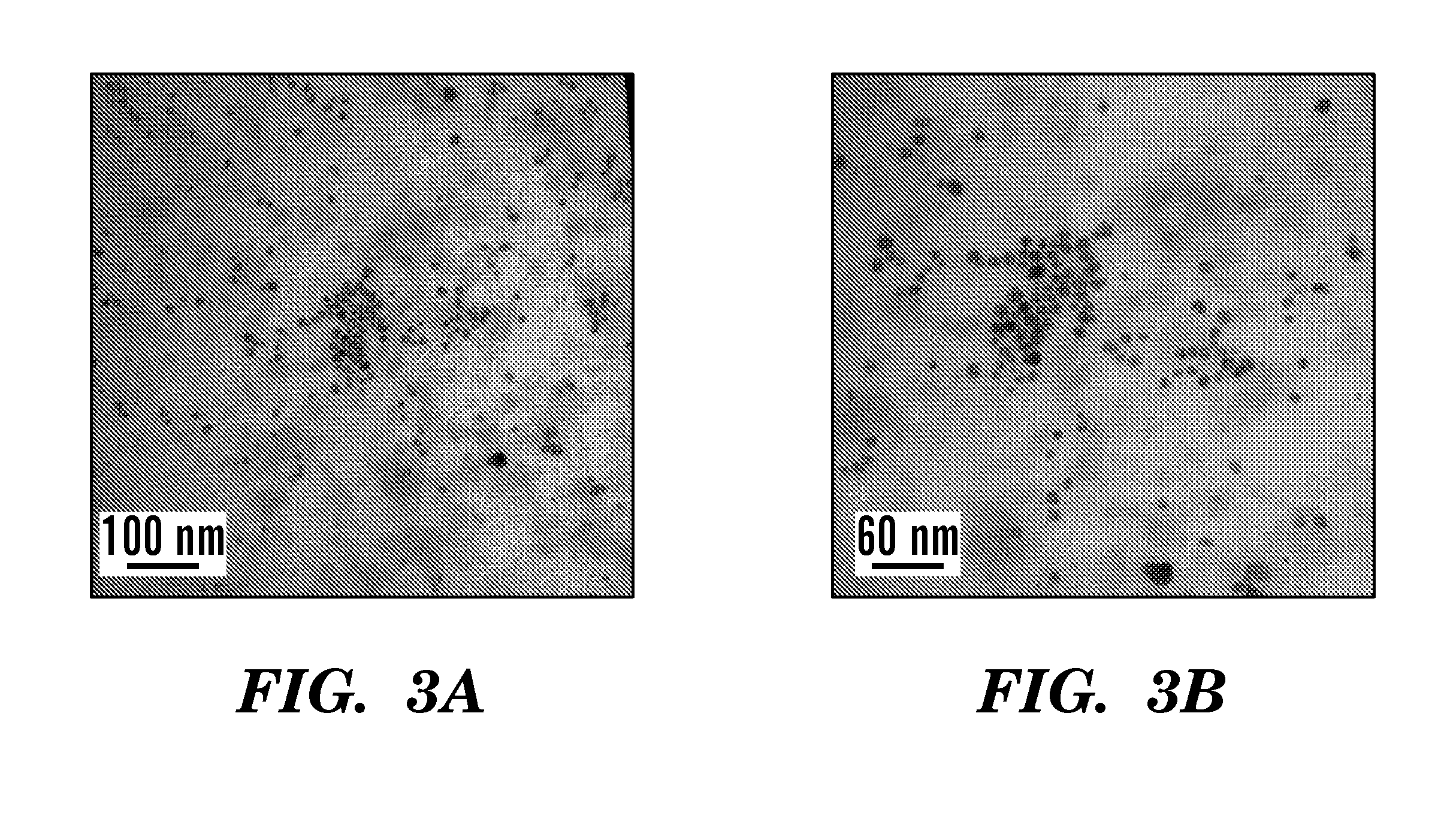Silver nanoparticles as Anti-microbial
a silver nanoparticle and anti-microbial technology, applied in the field of silver nanoparticle conjugation, can solve the problems of toxic to microorganisms, chemical incompatibility or environmental toxicity, and their use in the general public has garnered a lot of attention and investigation
- Summary
- Abstract
- Description
- Claims
- Application Information
AI Technical Summary
Benefits of technology
Problems solved by technology
Method used
Image
Examples
Embodiment Construction
[0025]The present invention provides a clean method, involving a single synthetic step for synthesizing silver nanoparticles in nanocomposites that exhibit antimicrobial activity. These nanoparticles may be prepared according to the present invention by reducing silver nitrate using agents such as, inter alia, polysaccharides, heparin (HP), hyaluronan (HA), and 2,6-diaminopyridinyl heparin (DAPHP) which are glycosaminoglycans serving as both reducing and stabilizing agents to form silver nanocomposites. The formed silver nanocomposites are stable at physiological salt conditions and exhibit a narrow size distribution for heparin-silver nanocomposites, and a broader size distribution for hyaluronan-silver nanocomposites. Studies performed in conjunction with the present invention and described infra show that the formed silver nanocomposites showed antimicrobial efficacy against both Staphylococcus aureus and Escherichia coli, with greater efficacy against S. aureus. Silver-HA nanoco...
PUM
| Property | Measurement | Unit |
|---|---|---|
| temperature | aaaaa | aaaaa |
Abstract
Description
Claims
Application Information
 Login to View More
Login to View More - R&D
- Intellectual Property
- Life Sciences
- Materials
- Tech Scout
- Unparalleled Data Quality
- Higher Quality Content
- 60% Fewer Hallucinations
Browse by: Latest US Patents, China's latest patents, Technical Efficacy Thesaurus, Application Domain, Technology Topic, Popular Technical Reports.
© 2025 PatSnap. All rights reserved.Legal|Privacy policy|Modern Slavery Act Transparency Statement|Sitemap|About US| Contact US: help@patsnap.com



